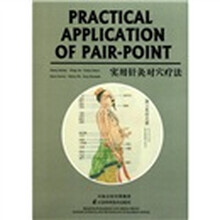Chapter Ⅰ. Review on Pair-point
Section Ⅰ. Tracing the Source of Pair-point Theory
Section Ⅱ. Pair-point Combination Principle and Formula
Section Ⅲ. Foundation of Pair-point Theory
Section Ⅳ. Modern Research of Pair-point
Section Ⅱ. Diseases and Pair-point Treatment
Combinations
Section Ⅰ. Stroke
Section Ⅱ. Headache
Section Ⅲ. Insomnia
Section Ⅳ. Vertigo
Section Ⅴ. Epilepsy
Section Ⅵ. Schizophrenia
Section Ⅶ. Hysteria
Section Ⅷ. Peripheral facial paralysis
Section Ⅸ. Conjunctivitis
Section Ⅹ. Myopia
Section Ⅺ. Tinnitus / Hearing Impairment
Section Ⅻ. Rhinitis
Section ⅩⅢ. Toothache
Section ⅩⅣ. Laryngitis
Section ⅩⅤ. Aphasia
Section ⅩⅥ. Common Cold
Section ⅩⅦ. Acute Bronchitis
Section ⅩⅧ. Chronic Bronchitis
Section ⅩⅨ. Bronchial Asthma
Section ⅩⅩ. Arrhythmia
Section ⅩⅪ. Coronary Heart Disease/Angina Pectoris
Section ⅩⅫ. Hypertension
Section Ⅹ. Hyperhidrosis
Section ⅩⅩⅣ. Hiccups
Section ⅩⅩⅤ. Acute Gastroenteritis
Section ⅩⅩⅥ. Chronic Gastroenteritis
Section ⅩⅩⅦ. Gastroneurosis
Section ⅩⅩⅧ. Peptic Ulcer
Section ⅩⅩⅨ. Constipation
Section ⅩⅩⅩ. Cholecystitis
Section ⅩⅩⅪ. Viral Hepatitis
Section ⅩⅩⅫ. Type 2 Diabetes
Section ⅩⅩⅩⅢ. Menoxenia
Section ⅩⅩⅩⅣ. Dysmenorrhea
Section ⅩⅩⅩⅤ. Dysfunctional Uterine Bleeding (DUB)
Section ⅩⅩⅩⅥ. Pelvic Inflammatory Disease (PID)
Section ⅩⅩⅩⅦ. Erectile Dysfunction
Section ⅩⅩⅩⅧ. Nocturnal Emissions
Section ⅩⅩⅩⅨ. Enuresis
Section ⅩL. Hemorrhoids
Section ⅩLⅠ. Pruritus
Section ⅩLⅡ Stiff Neck
Section ⅩLⅢ. Periarthritis of Shoulder
Section ⅩLⅣ. Rib Pain / Intercostal Neuralgia
Section ⅩLⅤ. Lumbar Sprain
Section ⅩLⅥ. Lower Back Pain

 缺书网
缺书网 扫码进群
扫码进群
 缺书网
缺书网 扫码进群
扫码进群